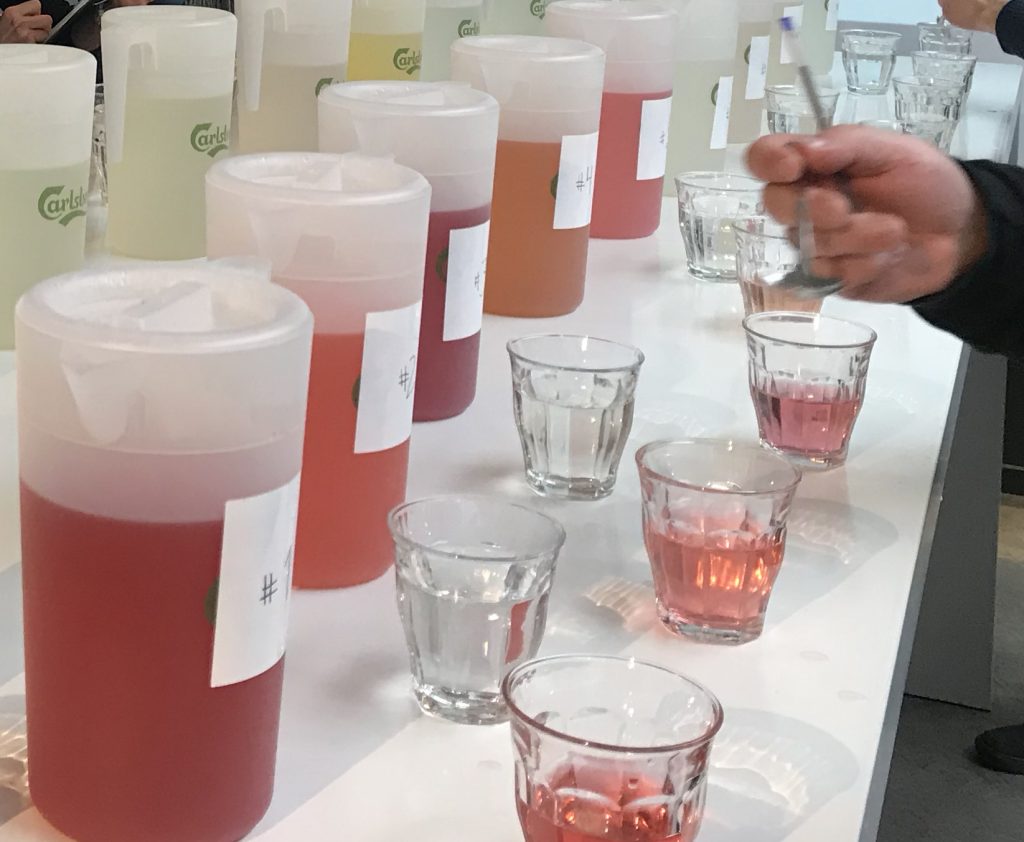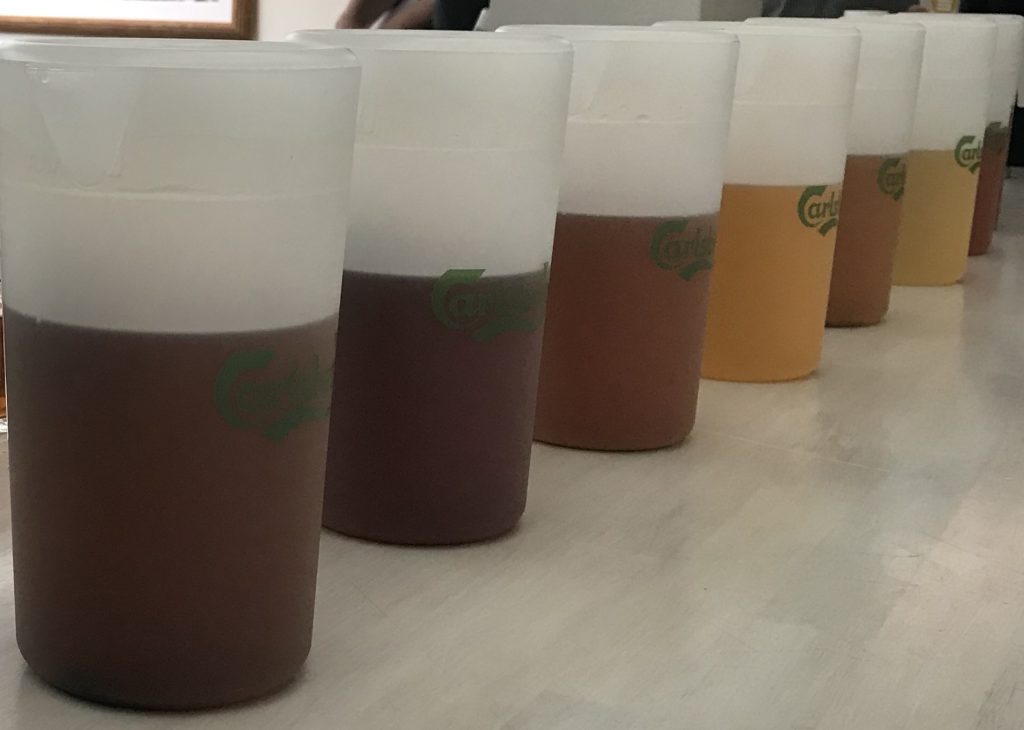Last year during our Autumn Cupping we ran a sensory workshop for our roasters. The event received so much positive feedback, we decided to run it again, only this time bigger and better!

We kicked off our recent Spring Cupping with another sensory workshop, hosted by our friends at Espressospesialisten. This time we expanded the fruit and floral section, and added a fun smelling game.
Why run a sensory workshop?
Doing this entire workshop is an excellent way to build your library and become a better taster. Flavour is based on memory. You have to have tasted something in order to name it, and the more you encounter the flavour, the easier it will be to remember.
Plus, it is super fun and enlightening. It allows you and your fellow practitioners to explore, discuss and learn more about how you perceive flavours, and what you which areas need a little more practice.
As with our Autumn sensory event, roasters were eager to know how to replicate this event themselves. So here are my instructions.
Instructions for running your own sensory workshop
Our event had three categories:
- Taste – Flavour Wheel Part 1: Fruit
- Taste – Flavour Wheel Part 2: Flowers
- Smell & Tell!
Taste Exercise 1: Fruit

The participant must taste and name the flavour.
- Blackberry
- Bilberry
- Raspberry
- Strawberry
- Red currant
- Pineapple
- Kiwi
- Green apple
- Pear
- Red apple
- Passion fruit
- Mango
- Papaya
- Grapefruit
- Orange
- Lemon
- Lime
Materials
- Fresh fruits and berries cut into pieces. If seventeen different fruits feels too ambitious, I recommend starting with ten. One hundred grams of fruit is sufficient to make two litres of solution;
- Hot water, 80 degrees celsius is fine;
- Containers for steeping the fruit;
- A strainer, so you can get the fruit out;
- Food colouring, if you want to make this one even harder than it already is.
Instructions
Weigh 100 grams of each fruit, chop and place them in individual containers.
Fill the containers with two litres of hot water. Let it sit for at least ten hours. And don’t worry, even when the solution cools, it will be very intense.
Strain the fruit out and pour into cupping bowls or glasses.
Taste Exercise 2: Flowers

The participant must taste and name the flavour
AAA Lavender
LLL Rose
PPP Jasmine
UUU Chamomile
SSS Orange Blossoms
RRR Elderflower
OOO Sage
TTT Hibiscu
Materials:
- Dried or fresh EDIBLE flowers, we used 20 grams. I’m gonna say this again, only use flowers you actually can consume;
- Hot water, 70 degrees celsius. Temperature is more important here, to avoid bitterness;
- Containers for steeping the flowers;
- A strainer, so you can get the flowers out;
- Food colouring, if you want to make this one even harder than it already is.
Instructions
Pop the dried flowers into the container, and pour hot water over it and let it extract for around ten hours.
Strain and pour into cupping bowls or glasses.
Where to buy dried edible flowers:
My favourite shops for dried edible flowers are Uncle Roys and Petite Ingredient
3. Smell & tell game
Participants must smell and name the aroma
For this one, you can use any aroma kit you have at hand. Last autumn we used Le Nez du Cafe, but this time we were super lucky to borrow a set of the “Smell & Tell” game from Coffee Mind!
The Coffee Mind Smell and Tell game is a combination of sensory and memory training. The kit features ten high quality aromas in small refill capsules designed to be distributed in the 20 bottles. Even with regular use the aromas will stay fresh for approximately two years when refilled periodically with the supplied aroma capsules.
From a learning perspective this game turns aroma differentiation and identification from a boring, learning by heart procedure, to a fun and engaging activity.
- Hazelnut
- Lavender
- Strawberry
- Thyme
- Raspberry
- Orange
- Apple
- Caramel
- Rose
The task is pretty clear – smell the bottles and identify the aroma.
Exercise sheets
Here are our exercise sheets and answers. Feel free to adapt them for your own workshop.
When should you run a sensory workshop?
We here at Nordic Approach would recommend you to do this exercise with your team and work, friends or even for your customers. It is a great way to jumpstart the conversation and have people think more about tasting, and how we talk and perceive flavour.
It’s also a great training for cuppers as you expand your vocabulary by building a library of flavours and words.
I’d recommend people who would like to become better tasters to do this exercise two or three times a year to capture the full range of fruits when they are in season. Repetition is key.
And, remember there is no limit to what you can do. Taste vegetables, grains, sweet, salty, sour, organic acids, or maybe even coffee, if you find the time. Unfortunately we didn’t get our organic acids in time for this sensory workshop, but if you would like to include them in yours, I normally order them from Coffee Chemistry.
The most important thing to become a better taster and cupper is practise. And allowing yourself the space you need to train and develop yourself.
Missed the sensory workshop at our Spring Cupping? We’ll run another one in October at our Autumn Cupping. Spaces are strictly limited so make sure you reserve a place on eventbrite.

